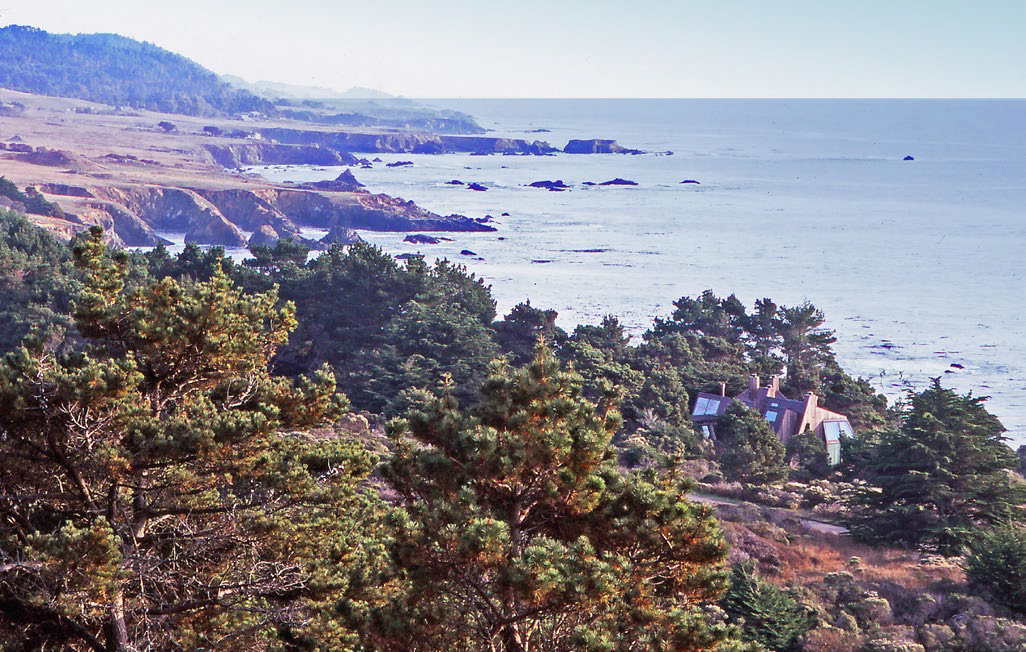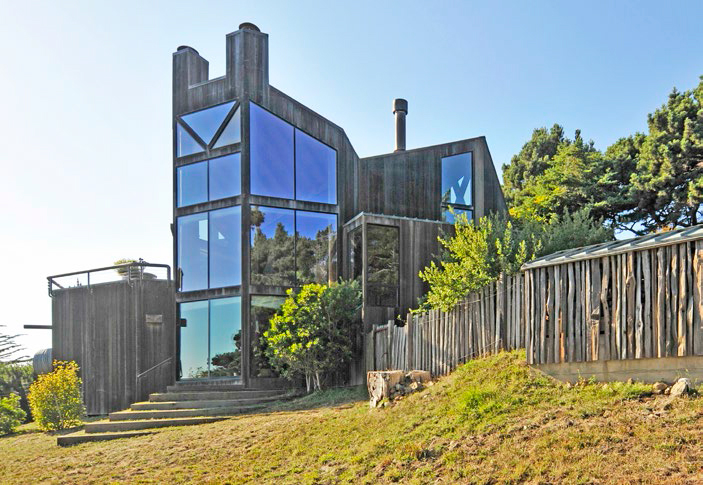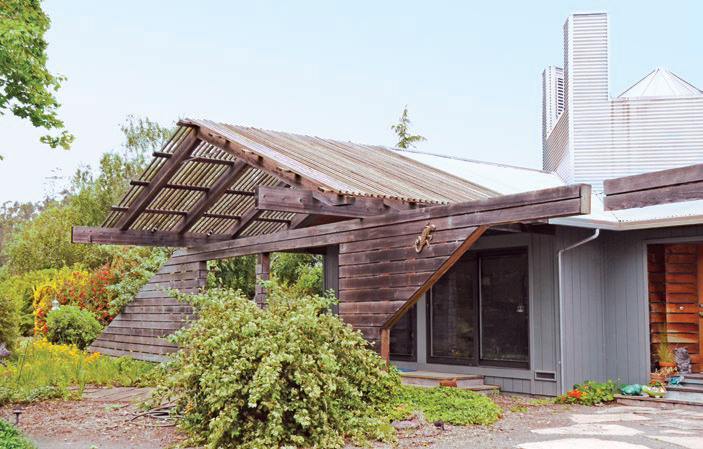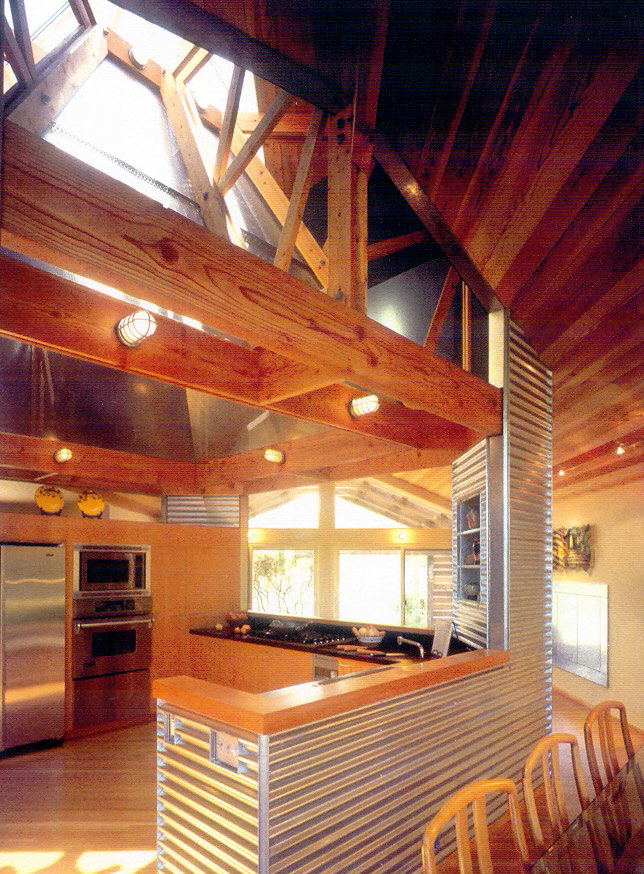Learning from the Land - Page 4
 |
|
|
 |
 |
|
|
 |
 |
|
|
Diane Johnson, who lives in a metal-clad Bowman home in Healdsburg, says, "We wanted something that would be easy to maintain."
Bowman's exterior forms can be sculptural and easy to read, like Sea Meadow, which from the meadow side looks like an arrowhead aimed at the sea. Other exteriors are complex, some with linked pavilions, including one of Bowman's favorite houses, Tin Roof.
The Cope house in Sausalito shows off another Bowman touch—an immense window wall that slopes in towards the house.
Sliding barn doors inside and out, Bowman-designed built-in and occasional standalone furniture, and light switches low on the wall (to be less noticeable) are other Bowman traits. Porthole-shaped lighting and open railings give some Bowman homes a Streamline Moderne feeling, like being on an ocean liner.
Bowman grew up working class in the Los Angeles community of Reseda, developing expertise in natural phenomenon, from stargazing to salamanders.
"He's an expert on them," Martino says of the latter. "I remember we were driving in L.A., and he pulled off to a little stream. 'I'll show you a little salamander.' He reaches under a rock and pulls out a salamander and tells me all about it."
After school Bowman worked for a firm designing shopping centers. It was not a good fit. Nor was Los Angeles.
"I was at his house one time," Martino recalls. "He had a telescope aimed at the mountains, but you couldn't see them because it was too smoggy."
Bowman remembers the awful traffic he and his girlfriend Helena, a schoolteacher, faced when heading back to the city after a salamander-viewing expedition.
"We thought, something is clearly wrong with this whole picture," Bowman says.
At the start of the '70s, Obie and Helena traveled the coast, and settled on the northern Sonoma and southern Mendocino region as a spot to settle. It's a beautiful area but not a hotbed for architecture—except at Sea Ranch, where architect-designed homes had been going up since 1965.
Bowman was invited to do his first project there, the Walk-In Cabins, 15 compact homes in the forest. The houses won praise.
Bowman laughs. "It's weird. I wanted to get out of L.A., and I ended up at Sea Ranch. Looking back, it seems a logical place to go. You've got somebody who's really interested in the environment and the way buildings relate to the landscape. But it wasn't conscious in my mind at the time. I just wanted to get out of L.A., and that's where we got to."
For a time Bowman had his office at Sea Ranch. He never lived there himself.
Today Bowman, who was made a fellow of the American Institute of Architects in 2008, is building his own Healdsburg home, which connects to his studio via a long bridge. He's working on half a dozen other projects. An artist all his life, he continues to paint and draw, often on themes related to animals.
"It's been a struggle," he says of the profession. "It's a struggle today. I never thought it would be like this. I thought at some point we would make it, and we could lean back in our chair and coast the rest of the way. But we're hustling now as much as we did 35 years ago."
"For me," Silva says, "Obie is in that very rare league of extraordinarily talented designers who never compromised his principles, and developed his own style that can be instantly recognized. You can instantly identify an Obie project. A lot of architects want to achieve that but do not."
• For more on Obie Bowman and his work, visit obiebowman.com
Photography: Obie Bowman, Dave Weinstein, Charles Miller, Maynard Hale Lyndon, Ned Alpers, Merg Ross, Viktor Budnik, Phil Simon; and courtesy Obie Bowman
- « first
- ‹ previous
- 1
- 2
- 3
- 4




